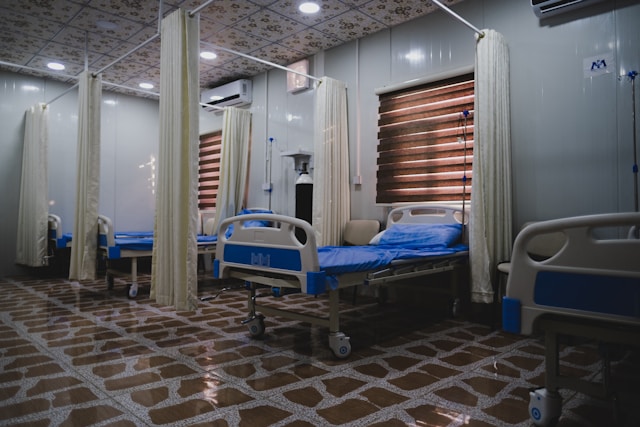|
|
Entering a Partial Hospitalisation Program (PHP) can feel like a big step—but it’s one that many people take to regain control over their mental health or substance use recovery. PHP provides a structured, supportive environment that does not require overnight stays. If you’re curious about what a typical day in a PHP looks like, this guide walks you through it—hour by hour—with real insight into the experience.

Photo by Levi Meir Clancy on Unsplash
What Is a Partial Hospitalisation Program?
A Partial Hospitalisation Program is a form of intensive outpatient care. It provides comprehensive therapy, psychiatric care, and support, typically for 4 to 6 hours per day, 5 days a week.
Unlike inpatient or residential treatment, you go home at the end of the day, which makes PHP ideal for those with a stable living environment and moderate to severe symptoms that don’t require 24/7 supervision.
According to SAMHSA (Substance Abuse and Mental Health Services Administration), PHPs are a critical part of the care continuum, helping to reduce hospital readmissions and support recovery [1].
Morning Routine: 8:00 AM – 9:00 AM
Arrival and Check-In
Clients arrive at the PHP facility and undergo a daily check-in process. Staff members assess mood, medication adherence, sleep quality, and any urgent concerns. This sets the tone for the day and ensures immediate needs are addressed.
Some programs include a brief mindfulness or meditation session to ease clients into the day.
“That first hour helps us centre ourselves. I always felt calmer after check-in,” says Maria, a former PHP client.
First Group Therapy Session: 9:00 AM – 10:30 AM
Group Therapy: Processing Emotions and Challenges
The day officially begins with group therapy, the cornerstone of PHP. Led by a licensed therapist, this session focuses on emotional processing, communication skills, and peer support.
Topics may include:
- Identifying triggers
- Managing anxiety or depression
- Coping with cravings (for those in addiction treatment)
- Practising DBT or CBT skills
According to the American Psychological Association, group therapy has been shown to be just as effective as individual therapy for many mental health concerns [2].
Break: 10:30 AM – 10:45 AM
Coffee and Reflection
Short breaks help clients refresh and prevent emotional fatigue. During this time, people often connect with peers, journal, or have a light snack.
Skill-Building Workshop: 10:45 AM – 12:00 PM
Learning Practical Tools for Everyday Life
This mid-morning session focuses on life skills, relapse prevention, and wellness education. Topics can range from managing finances to building boundaries in relationships.
For example:
- “Healthy Communication 101”
- “Nutrition for Mood Health”
- “Self-Care Routines That Stick”
These workshops offer hands-on tools that clients can apply immediately at home.
Lunch and Community Time: 12:00 PM – 1:00 PM
Nourishing Body and Mind
Lunch is often provided on-site, creating another chance to practice healthy habits and social engagement. Staff may join clients, encouraging casual conversation and observation.
Some programs incorporate optional recreational activities, such as art, yoga, or walking groups.
Afternoon Therapy Block: 1:00 PM – 2:30 PM
Speciality Therapy: Trauma, Family, or Addiction Focus
In the afternoon, clients might attend rotating therapy sessions that cater to their specific needs. These may include:
- Trauma-Informed Therapy
- Family Therapy (in-person or virtual)
- Addiction Recovery Groups
- Co-occurring Disorder Groups (for those with both mental health and substance use challenges)
At this point in the day, clients are often more open and reflective, leading to deeper therapeutic breakthroughs.
Final Check-Out: 2:30 PM – 3:00 PM
Wrap-Up and Safety Planning
Before clients leave, they participate in a wrap-up session. This includes:
- Reviewing what they learned
- Setting goals for the evening
- Discussing any ongoing concerns
- Confirming medication adherence (if applicable)
Clients may also complete self-assessments to track progress over time. This step encourages accountability and reflection.
What Happens After the Day Ends?
When the PHP day ends, clients return home or to supportive housing. Many engage in homework assignments, evening recovery meetings, or family discussions. Maintaining routines outside of PHP helps bridge treatment and real life.
“Going home each night was hard at first. But the program gave me the tools I needed to stay grounded,” shared Jason, who completed a PHP for anxiety and depression.
Is PHP Right for Everyone?
No program is perfect for everyone. PHP may not be suitable for individuals who:
- Are at high risk of self-harm or suicide
- Don’t have access to safe, stable housing
- Need detox or intensive medical supervision
- However, for many people with moderate to severe symptoms, PHP provides structure, community, and flexibility that fit into daily life.
A study published in Psychiatric Services found that PHPs led to significant reductions in hospitalisation rates and improvement in symptoms, especially for mood disorders [3].
Final Thoughts
A day in a Partial Hospitalisation Program is structured yet flexible, offering deep therapeutic work while allowing clients to stay connected to their lives outside of treatment.
For many, it’s a transformational experience—one that bridges the gap between crisis and full independence. If you’re seeking care that combines clinical support with real-world practice, PHP might be the next right step.


1 Comment
Pingback: A Day within the Lifetime of a Partial Hospitalisation Program. – olive-eel-337387.hostingersite.com